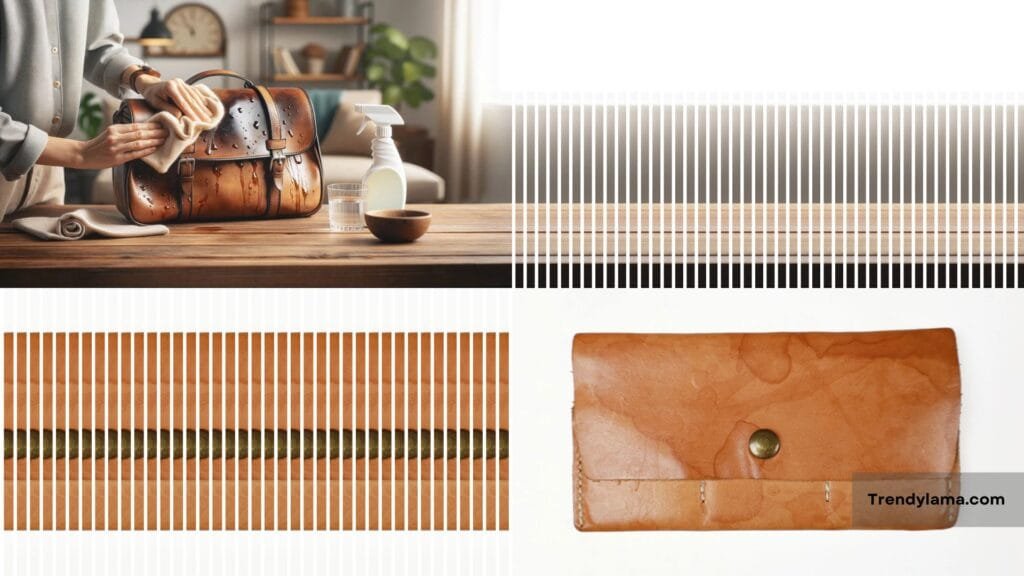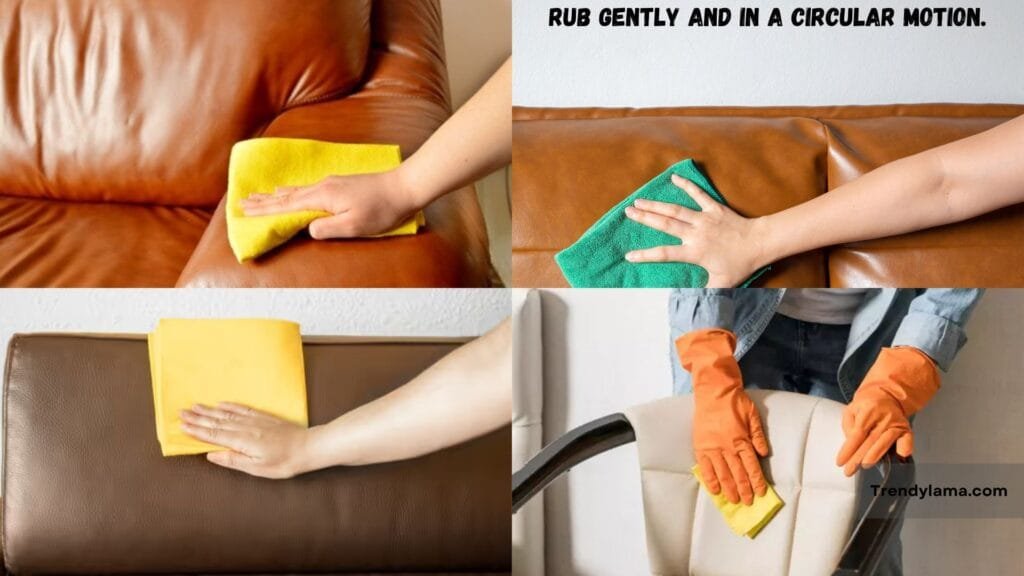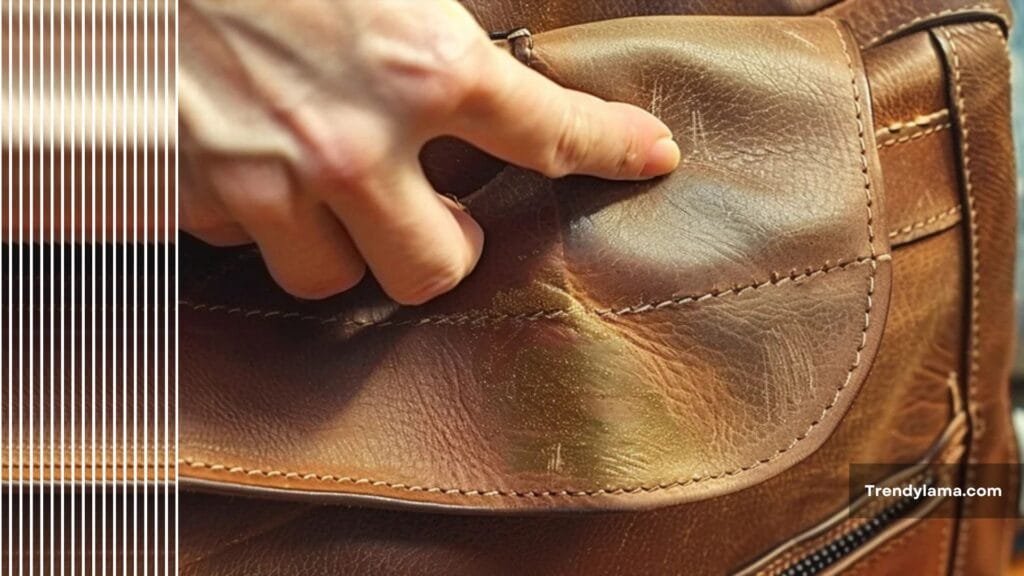Welcome to our world of care for leather in which every stain has its own story and each solution contributes to the heritage of your leather products.
It could be a bag that’s been your go-to for business or an item of footwear that’s been around throughout the day, marks on leather are truly a treat.
Don’t worry! In this elaborate guide, we are going to look specifically at the process of cleaning water stains on leather. When it comes to leathers, we have details on virtually all aspects from the varying nature, and flexibility of different leathers, to ways of removing water stains, and conditioning.
Let’s start this adventure to bring back the beauty of your leather-based possessions.

Leather is beautiful when it’s looking its best. However, can you clean your leather if watermarks appear on it? It can mar the looks of leather office chairs, shoes, handbags, and other related items.
How do water stains occur on leather?
You need to know how water stains on leather develop to prevent and treat the problem. So let’s take a look at how staining occurs and what can cause it to happen.
a. The Process of water Stain
If water is poured on the leather, it doesn’t stay on the surface. It gets absorbed through the pores of the pores the leather fibers. When the water evaporates some impurities or solids, dissolved in the water, will leave behind visible marks. Especially on leathers of lighter colors because it’ll be very noticeable, even something as small as an impurity can leave a stain.
b. Factors that cause water stains on leather items
Numerous situations can make products made from leather to be easily stained by water. The age of the leather can come into it. Old leather could have worn off a little bit of the outer skin, and become rougher. Leather quality is unreplaceable.
Leathers of lower quality are not taken good care of and could easily get spoilt by water. In addition, other conditions such as humidity or other chemicals can also cause the leather to become less hardwearing and therefore more likely to absorb water stains.
c. The Science of Leather Water Stains
From a scientific point of view, Water stains are a result of the effects of water on the molecular composition of leather. Leather has many natural waxes and oils in it and changing the phase by adding water. The alteration can cause changes in the texture and color that people regard as water stains.
d. Factors That Exacerbate Water Stains
There exist some conditions which lead to water staining of leather. For example, if you leave your leather uncovered for some days or weeks, then translating to more time under harsh, dirty environments, the likelihood of stains forming is high.
There could be some changes regarding the water temperature of each sample. It performs better than warm water used to soak the leather than the cold water. Other things, such as chemicals or salt in the water, might presumably cause even more severe staining.
The knowledge of the nature of leather and its behavior when coming into contact with water is extremely important to help you maintain and prolong the luxurious look of all your leather accessories. If it comes to knowing how various sorts of leather behave in regard to water or other factors that cause water stains you will know what ought to be done to be able to protect the leather items you own.

How to clean leather and remove water stains – 5-step process
If your leather is black, tan, or brown then you are welcome to follow these tips to clean the watermarks from your leather and get the topmost layer of the leather clean once more. The procedure requires some time To cover all the necessary stages and be ready to work for some time.
Step 1 – Act fast!
It might seem simple, but the longer the water stains remain on the leather greater damage could cause. Therefore, if you’re able to make a point of wiping off any spills as quickly as you can to avoid the damage that can be permanent!
Step 2: take a soft towel to make it damp.
The more soft the cloth is, the more comfortable. It should be moist enough that it doesn’t run, but certainly not dry. Avoid using soap or other chemicals. Just use water that is removed from your clothing.
Regularly suggests using water that is slightly warmer than the tap water which is too cold for leather.
Step 3: Rub gently and in a circular motion.
Start by applying the cleaner at the middle of the water stains then start moving it in circles around the stains. When you have determined the direction of that circular motion you should maintain that motion for the whole cleaning process.
It is here that you have to be mindful. In the event of excessive friction, the leather may be damaged So you must be gentle and patient when to rub the stains.
The concept behind this method is to gently moisten the water stains area while you move your brush to remove as much of the water stains as you can and then remove it during the process.
Step 4: Do not let the leather dry very fast, instead let it dry on its own.
If you believe the area that you’re working on is too moist you can try to wipe the excess water with an unclean, dry cloth.
Let the leather air dry and do not attempt to hasten the process by placing the leather near the car’s radiator or any other heat source since this may damage the rest of the leather and in worse-case scenarios, develop cracks.
A clean leather that is damaged because of failing to follow the procedure is not suitable for any person!
Step 5: Clean the leather with a cleaner
After the leather is thoroughly cleaned you can have it repaired and sealed with a cream for the protection of weathering. When applying the cream on the leather use circular, light motions. Remember to read the instructions on the pack of the leather cleaner you intend to use.

The history of leather
Leather was one of the first and most prized materials ever found. It was applied when our forefathers could not afford proper homes or central heaters to protect them from bad weather.
Man hunted animals in the wild to find food and then fashioned basic footwear, clothing, and tents out of their skins making use of as much animal as was feasible.
Similar to what was happening at the time the hides we use today are not a byproduct. Livestock farming is the raising of animals for purposes of meat, dairy, wool, and meat; skin is not a product of animal husbandry.
About half of the leather that is produced today is used to make shoes, while around 25 percent is used for clothing.
Upholstery accounts for only 15% of the overall. How cleaning leather has evolved over the years.
Conclusion
Finally, the process of maintaining your leather is as much a preventative one and the same as it is a caring one. Every process, from the recognition of the specific characteristics of each type of leather to the knowledge of how to clean it and feed it right is crucial to the life of your leather products.
Understand that leather is not only a product but also an important industrial segment. It is a living thing that requires the best effort and care. If you have been able to adhere to the advice we have given you above, you can be sure that your leather will stay as great as it is today, and continue its story of the journeys it has taken over the time of its use.
Along with water stains on leather, you should also know about chapstick stains.
FAQs for Cleaning Water Stains on Leather
Water spotting is whereby water enters the leather pores and when it dries, it leaves behind dirt or sediments. Aging, the kind of leather used, humidity levels, and exposure to chemical agents are some of the conditions that worsen staining. It is advised to avoid exposing the leather products to water, feed the leather products in the right condition, and cover them with protective sprays.
No, the best thing to do is to avoid soap or harsh household cleaners that can destroy the leather. To keep the leather’s texture and color, instead use a soft damp cloth with clean water and a leather cleaner specifically made for this purpose.
Drying leather naturally means that none of the above happens. Do not use heat sources like radiators or hair dryers – they cause your leather bag to become brittle and will affect the quality of the leather in the long term.
Clean and then apply leather conditioner or protective cream over the course of gentle, circular motions. The result is that it restores moisture, protects the leather against future damage, and keeps the leather feeling and looking supple and luxurious. Conditioning leather items regularly is the key to prolonging leather item life.







